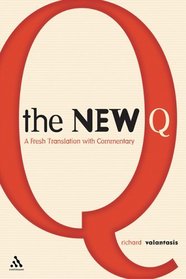Search -
The New Q: A Fresh Translation With Commentary
The New Q A Fresh Translation With Commentary
Author:
The American and European public has a voracious appetite for more information about Jesus and the formation of early Christianity. The best-selling books on the subject by Marcus Borg, John Dominic Crossan, John Meyer, and Luke Timothy Johnson, among many others, attest to this hunger. But each of these scholars presents his own reading of the ... more »
Author:
The American and European public has a voracious appetite for more information about Jesus and the formation of early Christianity. The best-selling books on the subject by Marcus Borg, John Dominic Crossan, John Meyer, and Luke Timothy Johnson, among many others, attest to this hunger. But each of these scholars presents his own reading of the ... more »
ISBN-13: 9780567025616
ISBN-10: 0567025616
Publication Date: 11/30/2005
Pages: 238
Rating: ?
ISBN-10: 0567025616
Publication Date: 11/30/2005
Pages: 238
Rating: ?
0 stars, based on 0 rating
Publisher: T. & T. Clark Publishers
Book Type: Paperback
Members Wishing: 1
Reviews: Amazon | Write a Review
Book Type: Paperback
Members Wishing: 1
Reviews: Amazon | Write a Review
Genres:
- Religion & Spirituality >> General
- Christian Books & Bibles >> Bible Study & Reference >> Criticism & Interpretation >> New Testament
- Christian Books & Bibles >> Bible Study & Reference >> General
- Christian Books & Bibles >> Bible Study & Reference >> Bible Study >> New Testament




